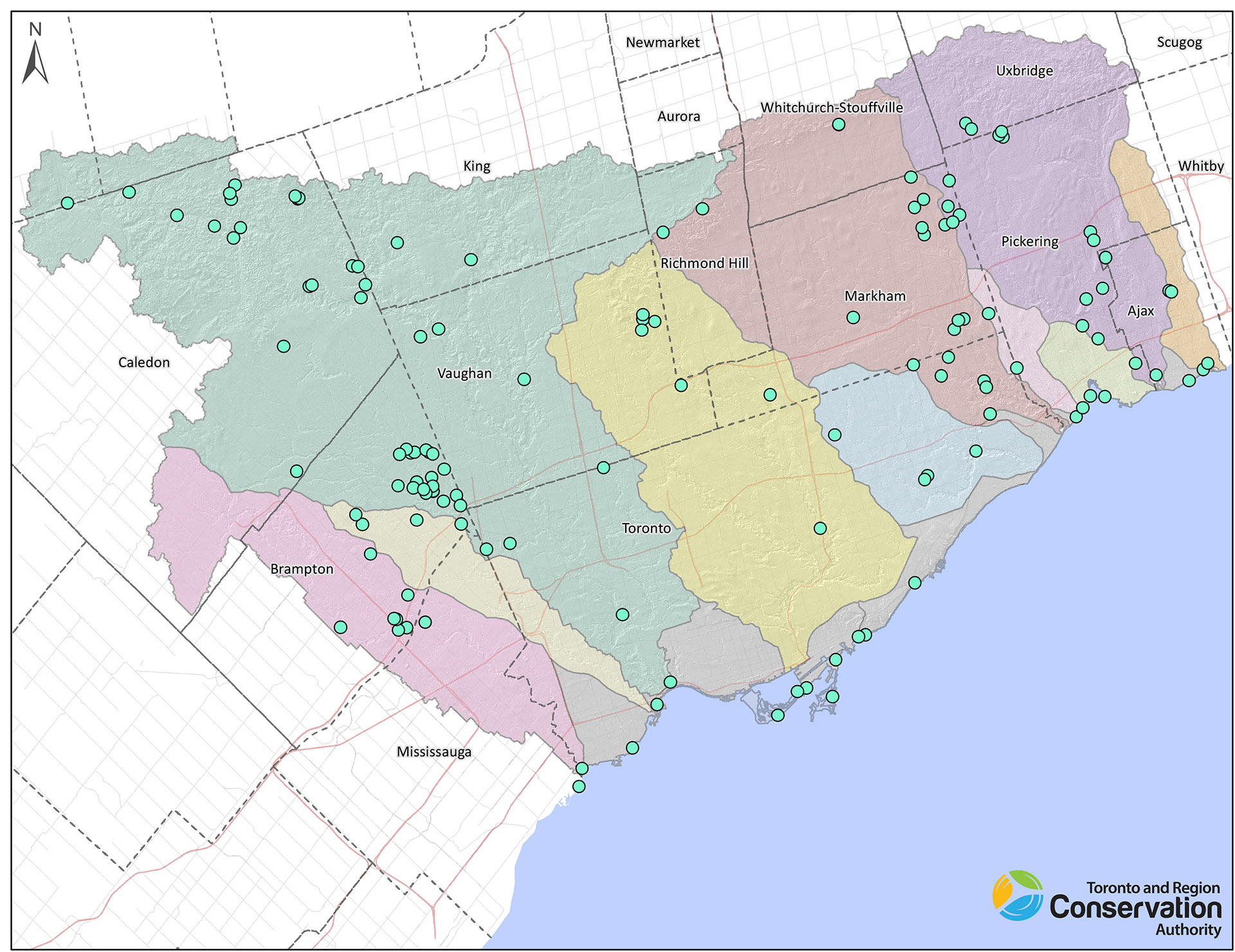Toronto and Region Conservation Authority (TRCA) is a global leader in ecological restoration, with more than 50 years of experience protecting, enhancing, restoring and monitoring impaired natural habitats.
TRCA strategically identifies, plans, implements and monitors projects to protect, restore and enhance natural cover, ecosystem function and wildlife habitat.
Strategic restoration is guided by the Integrated Restoration Prioritization (IRP) process, which directs site selection to provide the maximum benefit to natural system function.
TRCA works with federal, provincial, regional, municipal and private partners to complete restoration projects.
TRCA restores a variety of impaired land cover types including streams and valley lands, wetlands; shorelines, native grasslands and meadows, and forests. TRCA also restores essential wildlife habitat and implements Low Impact Development projects in urban environments.
TRCA regularly applies research and monitoring techniques to inform future restoration projects and quantify restoration benefits.
Our ecological restoration programs are essential to maintaining a robust and resilient natural system that can benefit human health and well-being — especially as the Greater Toronto Area continues to experience environmental pressures of urbanization and climate change.
Restoration Projects: Video Playlist
What’s Happening
Restoration Projects Map
CLICK TO DOWNLOAD A PDF VERSION
Information and Resources
Integrated Restoration Prioritization (IRP): A Multiple Benefit Approach to Restoration Planning
TRCA and partners have developed a multi-discipline and multi-benefit approach to restoration prioritization to enable restoration outcomes that help to realize the requirements of our funding partners, TRCA’s watershed objectives and development compensation options.
Effective ecosystem restoration requires an integrated approach, considering many components of the natural system when prioritizing where and what to restore. This approach, called Integrated Restoration Prioritization (IRP), is a process of combining various strategies, plans and initiatives for both terrestrial and aquatic systems, upon which a vast assortment of environmental data as well as threats to ecosystem health can be overlaid.
IRP divides TRCA’s jurisdiction into 30-hectare catchments, and scores each on parameters relating to natural cover, aquatic systems, altered hydrology, connectivity and natural heritage value. The IRP consolidates this data to compare discrete areas, as it relates to impairments to ecosystem function and natural heritage potential, as a means to improve the delivery of ecological goods and services.
The scores are combined to give the catchment an overall priority for restoration: low, medium or high with an added “protection” category to highlight areas of existing high ecological value.










